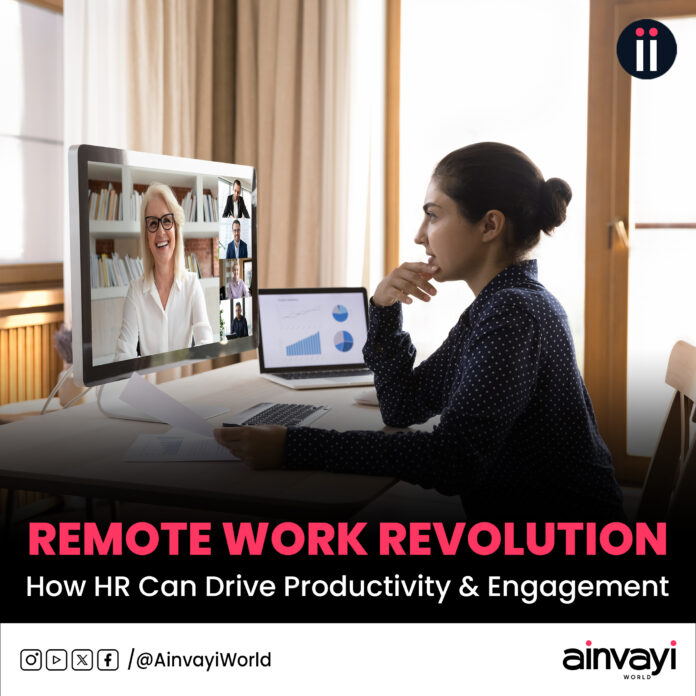Introduction
As businesses worldwide embrace the flexibility and advantages of remote work, what was once an uncommon perk is now an integral part of modern work culture. Advances in technology and a shift toward digital economies have accelerated this transformation, making remote work a necessity rather than an option for many organizations. This shift presents new challenges and opportunities for Human Resources (HR), requiring innovative strategies to manage a dispersed workforce effectively. Let’s explore key approaches HR can implement to ensure the success of remote teams.
Understanding the Shift to Remote Work
Remote work is no longer just about working from home—it’s about rethinking how work is organized and managed. It offers numerous benefits, including increased productivity, reduced operational costs, and access to a broader talent pool. However, it also comes with challenges such as ensuring clear communication, maintaining team cohesion, and fostering engagement. Organizations must focus on building a culture of trust and accountability that enables employees to thrive, regardless of location. The key is to create an environment where remote teams feel connected, supported, and empowered.
Leveraging Technology for Remote Work
Technology is the backbone of an efficient remote work setup, enabling communication, collaboration, and workflow management. The right tools empower teams to stay organized, productive, and secure, no matter where they are working from.
Some of the popular tools to ensure remote work success are:
- Project Management: Trello, Asana, Monday, Smartsheet, Jira, ClickUp, Notion, Airtable, Wrike, Workfront
- Communication & Collaboration: Slack, Zoom, StreamYard, dropbox Switchboard, Miro, Marlee, Dropbox
- Productivity Suites: Google Workspace, Microsoft 365
- Cybersecurity Solutions: VPNs, Multi-Factor Authentication (MFA), cloud security tools, encryption
As remote work expands, security concerns grow. Organizations must prioritize data protection and cybersecurity best practices to mitigate risks and safeguard company information.
Engaging and Retaining a Remote Workforce
Engaging remote employees requires deliberate efforts to foster connection and inclusion. By prioritizing it, organizations can boost morale, enhance retention, and drive long-term success in a distributed workforce.
Some of the effective strategies include:
- Regular virtual check-ins and team meetings to maintain alignment and communication.
- Virtual team-building activities and informal gatherings to build camaraderie.
- Mentorship and training programs to encourage professional growth.
- Frequent refreshment and fun breaks to prevent burnout and enhance productivity.
- Recognition and rewards to celebrate contributions and achievements.
- Transparent communication and open feedback channels to ensure employees feel heard and valued.
A strong remote work culture ensures employees feel like part of a team, even when working miles apart.
Performance Management in a Remote Setting
Effective performance management is crucial for ensuring accountability and productivity in a remote environment. A strong performance strategy is built on clear goals, regular feedback, and continuous evaluation.
Best Practices for Remote Performance Management:
- Set clear objectives, expectations, and key performance indicators (KPIs) to guide employee efforts.
- Foster open communication to ensure alignment and clarity.
- Provide ongoing support to help employees stay on track and improve their performance.
- Conduct regular check-ins and performance reviews, utilizing a variety of tools and techniques, to monitor progress, address challenges and offer feedback.
- Recognize and reward accomplishments to keep employees motivated.
By prioritizing transparent communication and continuous support, organizations can empower their remote teams to perform at their best while fostering a culture of accountability and excellence.
Training and Development for Remote Workers
Continuous learning is essential for both professional growth and job satisfaction. Organizations must invest in training and development programs that cater to remote employees’ needs.
Some of the ways to Support Learning and Growth in a Remote Workforce:
- Offer access to online training courses, and e-learning platforms
- Conduct virtual workshops, and skill-building sessions
- Provide mentorship, counseling and coaching opportunities
- Encourage employees to participate in industry webinars and conferences
By prioritizing learning and development, businesses can cultivate a skilled and engaged remote workforce.
Supporting Employee Well-being and Mental Health
While remote work provides flexibility, it can also lead to feelings of isolation, burnout, and work-life imbalance. Organizations must actively support employees’ mental health and well-being.
How HR Can Support Remote Employee Well-being:
- Implement virtual wellness programs and counseling services
- Encourage employees to take breaks and set clear work boundaries
- Offer flexible work hours to promote work-life balance
- Foster a supportive and open culture where employees feel comfortable discussing challenges
Prioritizing well-being not only enhances employee motivation and engagement but also strengthens productivity and long-term retention. Organizations that actively address remote work stress through structured wellness initiatives and clear boundaries create a healthier and more sustainable work environment.
Building and Maintaining Team Cohesion
Maintaining strong team connections in a remote work environment can be challenging, but it’s not impossible. It requires deliberate effort. When employees feel like part of the team, collaboration thrives, and productivity improves.
Ways to Foster Team Cohesion Remotely:
- Organize virtual team-building activities, games, and social events
- Encourage cross-team collaboration through shared projects and interdepartmental initiatives
- Create open channels for informal communication and casual interactions
- Recognize and celebrate team achievements
A strong sense of belonging leads to increased engagement, collaboration, and overall team satisfaction.
Conclusion
The future of work is rapidly evolving, with remote work at its center. To navigate this transformation successfully, HR professionals must adapt to new challenges, embrace innovation, and implement strategies to manage and support a distributed workforce successfully. By leveraging technology, supporting employee well-being, and cultivating a strong remote work culture, organizations can build a resilient and high-performing workforce. The future of work is already here, and with the right approach, organizations can make it both successful and rewarding.




